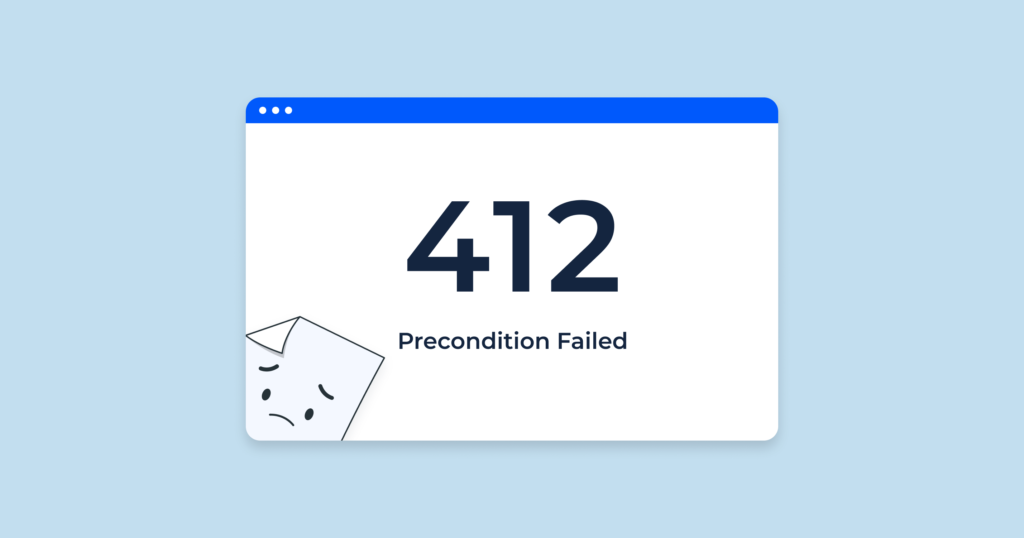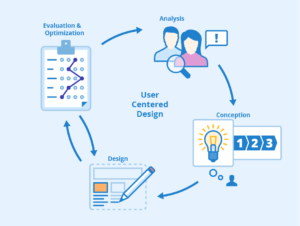412 Precondition Failed Error, Causes and Solutions – Your Comprehensive Guide

412 Precondition Failed Error, Causes and Solutions - Your Comprehensive Guide
Introduction
In the realm of web interactions, error codes play a pivotal role in communication between clients and servers. Among these, the “412 Precondition Failed” error is a signal that the conditions specified in the request headers were not met, preventing the server from processing the request. In this comprehensive guide, we’ll dive into the intricacies of the 412 error, explore its underlying causes, and provide you with a step-by-step guide to effectively troubleshoot and resolve it.
Understanding the 412 Precondition Failed Error
The “412 Precondition Failed” error is an HTTP status code that indicates that the conditions specified in the request headers were not satisfied by the server. It typically occurs when the client’s conditions for performing a certain action, such as modifying or updating a resource, are not met.
Common Reasons for the 412 Error
- Conditional Headers Mismatch:The primary cause of the 412 error is a mismatch between the conditional headers provided by the client and the server’s evaluation of those conditions.
- ETag or If-Match Mismatch:Conditional headers like “If-Match” or “If-None-Match” are used to specify ETag values for resources. If these values don’t match the server’s, a 412 error can occur.
- Date and Time Conditions:Conditional headers like “If-Unmodified-Since” or “If-Modified-Since” rely on date and time values. If these values don’t align, the server can return a 412 error.
Resolving the 412 Precondition Failed Error: Step-by-Step Guide
- Review Conditional Headers:Double-check the conditional headers in your request, such as “If-Match,” “If-None-Match,” “If-Unmodified-Since,” or “If-Modified-Since.”
- Verify ETag Values:If the error is related to ETag values, ensure that the ETag specified in the request matches the current ETag of the resource on the server.
- Check Date and Time:If date and time conditions are involved, verify that the date or time values in the request match the server’s understanding of the resource’s state.
- Use Proper Format:Ensure that the values you’re providing for conditional headers are in the correct format as required by the HTTP specification.
- Review API Documentation:If you’re working with APIs, consult the API documentation to understand how to correctly use conditional headers and what values they expect.
- Update Code:If you’re a developer, review your code to ensure that you’re correctly constructing and including the necessary conditional headers.
- Test with Different Values:Experiment with different values for the conditional headers to find a combination that satisfies the server’s conditions.
- Inspect Server Responses:Analyze the server’s response headers for additional details about why the conditions were not met.
- Contact Support:If you’ve exhausted all options and continue to face the error, reach out to the website’s support team or your system administrator for assistance.
Conclusion
Encountering the 412 Precondition Failed error might seem like a technical hurdle, but with a deeper understanding of its origins and potential solutions, you’re now better equipped to address it. Whether it’s about conditional headers, ETag mismatches, or date and time conditions, this guide empowers you to navigate through the intricacies of meeting server conditions with confidence. Remember, attention to detail and a systematic approach are key to resolving the 412 error and ensuring smooth communication between clients and servers in your online interactions.
For More Related Articles Browse Our Website Blogster.pk
For social Connection You can also Visit and follow our Social media Platforms
Facebook , Instagram, Linkedin, Pinterest, Quora, Twitter, Youtube.





